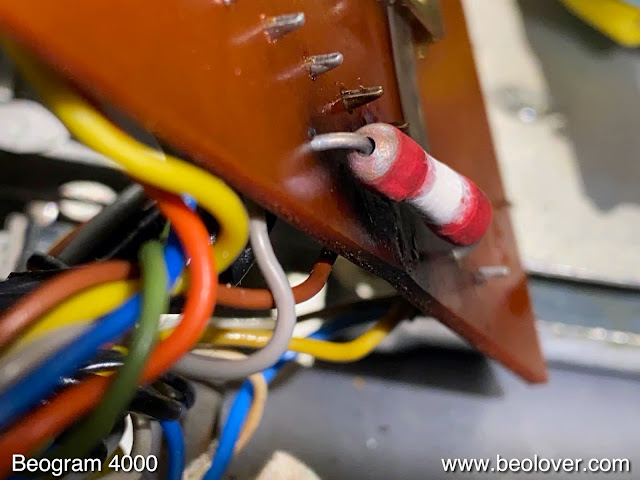I recently received a DC platter motor, the main PCB, and the RPM panel from a Beogram 4002 (5521) for restoration. The parts reached me via a personal courier from the Netherlands. As usual I started working on the motor first since it can take a few days until the motor bearings are infused with fresh oil. This shows the motor as received:
Beolover provides professional Bang&Olufsen maintenance and restoration services. We give one year warranty on parts and labor. All parts featured on the blog are also available to other enthusiasts for their restoration projects. Please, send an email to beolover@gmail.com or use the contact form on the side bar. Enjoy the blog!
Featured Post
Beolover SyncDrive: DC Platter Motor Replacement for Beogram 4002 and 4004 (Type 551x and 552x)
Late Beogram 4002 and the 4004 (Types 551x and 552x), which have DC platter motors instead of the earlier synchronous AC motors usually suff...
Wednesday, December 30, 2020
Beogram 4002 Type 5521: Restoration of DC Platter Motor, Main PCB, and RPM Panel
Sunday, December 6, 2020
Beogram 4004 DC Platter Motor Restoration
I recently received a DC platter motor from a Beogram 4004 in California for restoration. This shows the motor as received:
Friday, December 4, 2020
Beogram 4000: A New Arrival from New York
I recently received another Beogram 4000 for restoration. This one came from New York. It came in a Beolover double boxed shipping container and so shipping was no problem. I extracted the unit from its cocoon and put it on the bench:
Tuesday, December 1, 2020
Beogram 4000: A Very Corroded New Arrival from Sweden
I recently received a Beogram 4000 from Sweden. It arrived double-boxed and there was no shipping damage. A good sign! I extracted it from the boxes and put it on the bench. This post summarizes my first impressions.
First the good: This Beogram 4000 came with pretty decent aluminum surfaces. The platter is in good condition. The lettering on the arms cover was protected and therefore survived. The big and small panels are also pretty good. But we will see after cleaning them how good they are. The unit is pretty dirty.
Wednesday, November 25, 2020
Beogram 4000: A Fun Evening with a Smoking Solenoid Resistor
This is another installment of my 'A Fun Evening with...' series...;-). A Beogram 4000 that I restored this summer came back with a non-working arm lowering mechanism and the emission of a 'burnt smell'.
Oh well...I extracted it from the box and put it on the bench and removed the aluminum plates for a closer look.
After I plugged in and pressed ON, the unit started normally, but at the LP set-down point the arm would not lower. Instead the unit gave me a vivid demonstration of 'burnt smell', while a thin plume of smoke rapidly developed on the left side of the PCB that carries the carriage switches.
I quickly pulled the plug and lifted the PCB and found a browned solenoid resistor (7R1) and a blackened board:
Monday, November 23, 2020
Beogram 4002 DC Platter Motor Restoration
I recently received the DC platter motor from a Beogram 4002 located in Iowa. This shows the motor as received:





















































